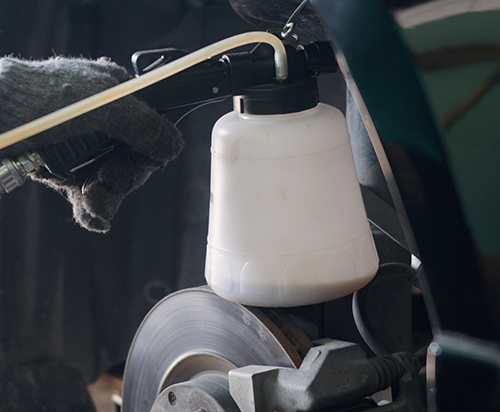Proudly serving Evans, CO, and surrounding communities
What is a brake system flush?
Brake fluid is essential for the operation of a vehicle’s brakes. When pressing the brake pedal, the brake fluid causes the brake pads to press against the rotors, making the vehicle slow down and stop. Over time, the brake fluid absorbs air, moisture, sludge, and other contaminants making the brake fluid contaminated. Air in the brake fluid causes braking to sometimes feel spongy and significantly reduces braking efficiency. A brake system flush includes removing the existing fluid and moisture from the system and then replacing brake fluid with clean (new) brake fluid. A brake fluid flush ensures proper brake system performance and increases the lifespan of your brake system components. Brake Flush is recommended when the brake fluid is dark brown/black or when it is contaminated.

Most vehicles feature hydraulic brake systems, which can be adversely affected by changes in the brake fluid. For instance, contaminants such as dust and metal chips can affect the brake master cylinder and calipers, which may affect the overall performance of the brake system. For instance, some vehicle models require a brake flush after every 20,000 –45,000 miles while other vehicle manufacturers recommend a brake flush after every two or three years – regardless of the mileage. Vehicle owners should consult their manufacturers for recommendations on when to change brake fluid. The brake fluid is usually in a watertight container and may last for years if it is not contaminated. Water causes the internal components of the brakes, including the lines, cylinder, and calipers, to corrode &rust. The ABS Brake system can be affected when the copper content of the brake fluid rises above 200 PPM. While the copper content itself doesn’t cause any immediate issues, high levels of corrosion could cause the ABS to fail during an emergency stop. Our Brake System Flush Includes:
- Remove contaminated brake fluid.
- Add new brake fluid.
- Bleed the brakes.
- Clean any surfaces where brake fluid has spilled during the bleeding process.
- Check for fluid leaks.
- Inspect brake pads, rotors, and hoses.
- Test drive vehicle.







